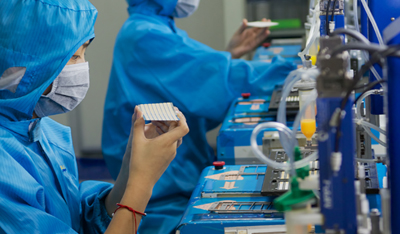Linear Conveyor Module LCM100
Next generation linear conveyor LCM100 supersedes belt conveyors and roller conveyors.

- Improve takt time
- Increased throughput
- Excellent maintainability
- Reduced transport line space
- Flexible line configurations
- Shorter start-up time
- Lower running costs
- Long service life
Feature
To all customers who have concerns regarding your production line
The issues facing the manufacturing industry continue to increase each year: shortened lead time, reduced cost, increased product quality, support for small production lots of diverse types, and reduced installation space.At a single stroke, the LCM100 solves these issues by fundamentally overturning existing concepts of transport between manufacturing processes. Why not implement the next generation of production line with us?

Two-second reduction in takt time. Here's why.
"Linear conveyor" overturns existing concepts of the production line.
01Reduced transfer time
Transfer takt time can be reduced simply by switching to the LCM100 linear conveyor in place of the free-flow conveyor or roller conveyor frequently used for transfer between manufacturing steps.

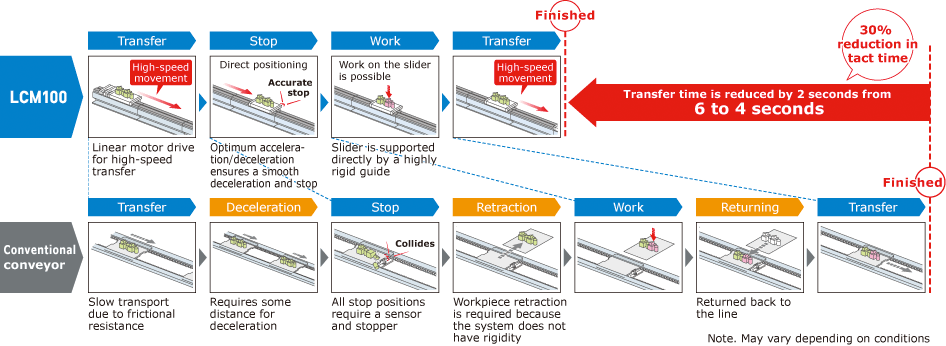
02High-speed and high-accuracy transfer
- Max. speed: 3000 mm/sec.
- Max. acceleration: 2G
- Max. load mass: 15 kg
- Repeated positioning accuracy: +/−0.015 mm (standalone slider) Note
- Note.
- This is the repeated positioning accuracy for a standalone slider when positioning from one direction (single-side approach).
- Note.
- The positioning accuracy for the single-side approach after correction by RFID is 0.1 mm including the mutual difference between sliders.
03Increased yield
- Increased yield
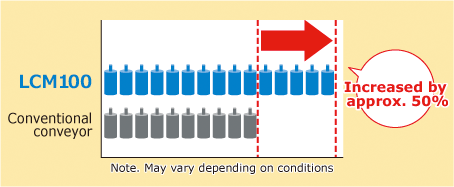
Features and effectiveness of modular production.
Modular production allows highly flexible line structure.
The length of the transfer line can be adjusted freely by adding modules.
01Save equipment space.
- Since the movement direction can be changed, the same processes are made common. This makes the equipment compact and results in cost reduction.
- Forward and backward movement at a high speed can be set freely.
- Flexible actions such as moving only some sliders backward is possible.
Numerical values are used for setting transfer distance and stop positions
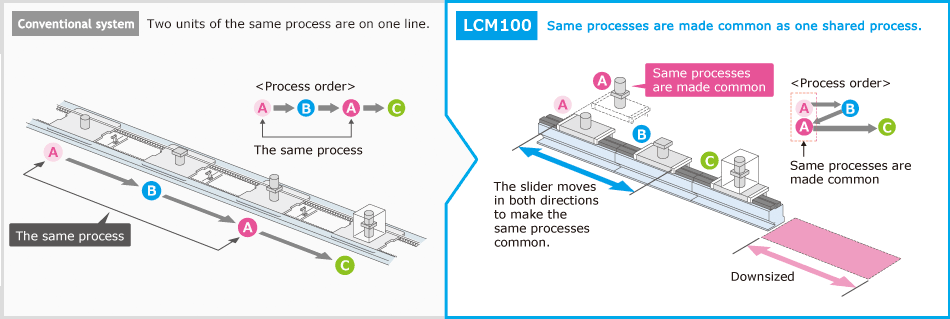
02Can be moved efficiently between processes with different takts
- Narrow pitch movement is possible.
- Movement time can be reduced by combining the use of different movements, such as using pitch-feed for the same processes in short-time processes while transferring three workpieces at the same time at a high speed in long-time processes.

03Workpieces do not need to be retracted
- As the work moves down, you can assemble and process them on the transfer line.
- Eliminates having to retract the work from the pallet to the work table.
- Reduces costs.
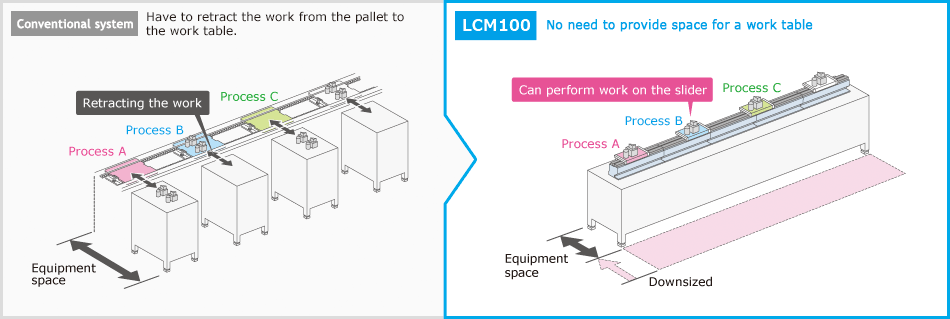
04Significant reduction of start-up time
- Just connect modules for easy construction of a transfer line.
- Lifting cylinders, sensors, stoppers, and other complex parts are not necessary.
- Operations can be performed by using only the LCC140 Controller.
- Economical as excess modules can be used for other lines or stored for maintenance.

05Construct branching lines, joint lines, and other lines in flexible configurations.
- Layout examples by combining modules with circulation mechanisms
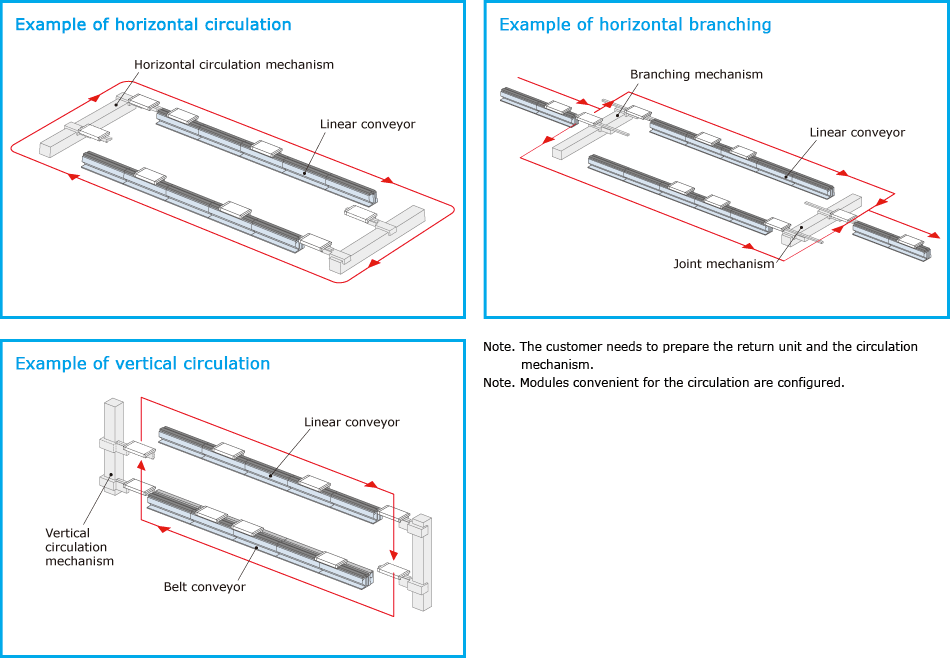
Additional modules provide expandability.
A variety of modules for different needs are provided.
Flexible set-up of the slider's acceleration/deceleration, forward/backward movement, positioning, and other actions.The variety of possible line structures has been greatly expanded to supersede conventional models.
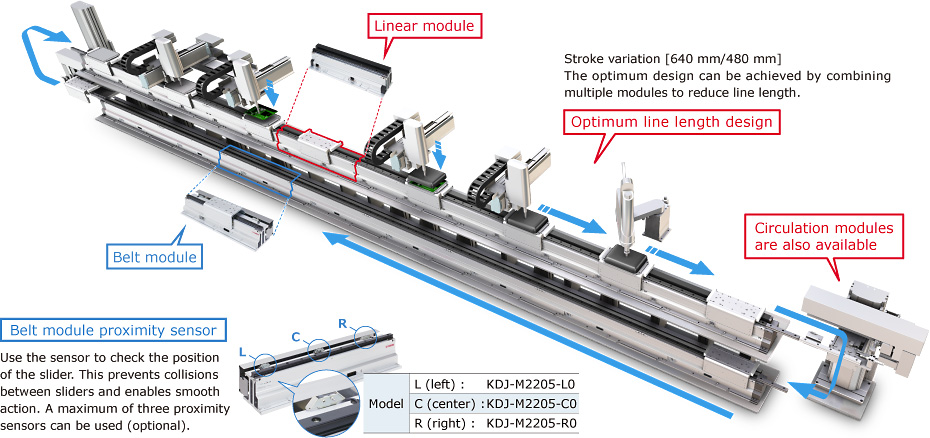
01Belt modules can be selected to your needs
Genuine new Yamaha belt modules are included in the lineup.
- Low price...Using modules only for return processes and interprocess transfer will help reduce the facility cost.
- Easy control without controllers and no need to create robot programs
| Pin Number | Signal | Role |
|---|---|---|
| A1 | +24V | Power connection |
| A2 | GND | DC24V(+/−10%) |
| A3 | ||
| A4 | Optional sensor L | Detection output |
| A5 | Optional sensor C | Detection output |
| A6 | Optional sensor R | Detection output |
| A7 | ALARM output | Alarm output |
| A8 | SPEED output | Speed output |
| B1 | ALARM-RESET input | Alarm reset input ON [L]:reset. OFF [H]:normal. |
| B2 | INT.VR/EXT input | Speed setting device switching input ON [L]:internal. OFF [H]:External. |
| B3 | CW/CCW | Rotation switching input ON [L]:CW. OFF [H]:CCW |
| B4 | RUN/BRAKE | Brake input ON [L]:run. OFF [H]:momentary stop. |
| B5 | START/STOP | Start/stop input ON [L]:run. OFF [H]:stop. |
| B6 | VRL | − side Speed setting current power |
| B7 | VRM | + side DC 0 − 5V 1mA or higher |
| B8 | VRH | (When a dedicated speed setting device used) |
- Greatly decreased design and production labor
The guide connections, connection height, and stroke length are completely compatible between belt and linear modules. Reduced design and production labor will help speed up the start-up time. Note1
- Note1.
- The belt module and the linear module have different depths.
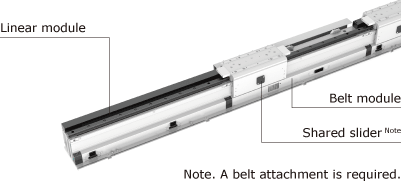
02Easier to design and implement
- LCM100-2MT, a module for circulation, is available to insert or eject a slider into or out of a line.
- Also can be used for a return mechanism.
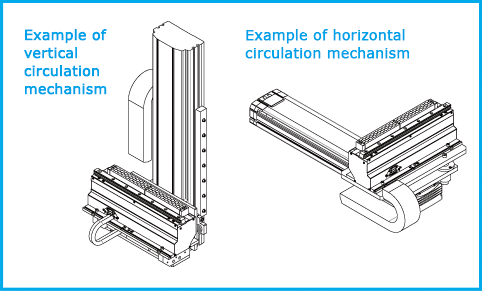
We welcome consultations on proposals for customized design, design drawing presentation, etc., to create return units best fitting your request.
For details, contact our sales representatives.
Excellent maintainability.
Standardization of module structure and parts ensures easy part exchange and maintenance.
Loss-free transport that was not possible with conventional conveyors can be achieved with LCM100. Reduce losses while increasing profitability.
01Optimal for small batch production of various product types
- No need for mechanical stoppers or sensors. Change layout easily.
- Reconstruction can be finished quickly by just changing the program to set a stop position.
- Frequent unit changes for different models can be handled flexibly.

02Quick recovery by replacing the slider when machine trouble occurs
- Parts can be replaced easily.
- Parts can be kept for maintenance as they are standardized.
- Possible to minimize the downtime of a production line.

03Easy maintenance
- Motors and scales do not make contact and are free from abrasion.
- As only the rails are sliding parts, dust generation is low.
- There are only a few consumable parts, which mean a long service life.
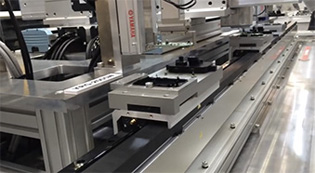
System configuration diagram (when 3 sliders are connected)
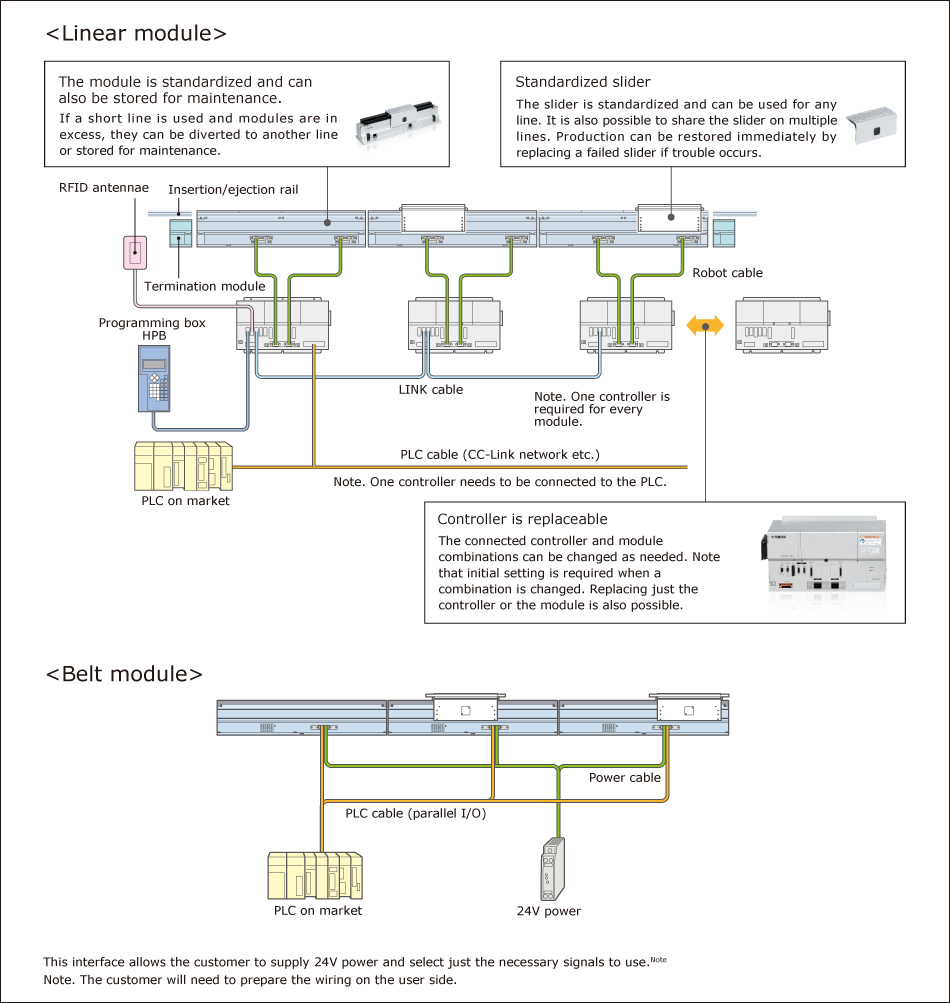
Static tolerable load of slider
Static loads shown below are tolerable as references when performing the screw tightening, part assembly, or light press-fitting on the slider.
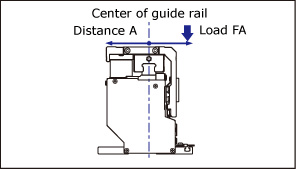
| A(mm) | Payload | ||
|---|---|---|---|
| 5kg | 10kg | 15kg | |
| 0 | 2550 | 1560 | 1270 |
| 10 | 1790 | 1280 | 1170 |
| 20 | 1380 | 780 | 630 |
| 30 | 1130 | 520 | 420 |
| 40 | 900 | 390 | 310 |
| 50 | 720 | 310 | 250 |
| 60 | 600 | 260 | 210 |
- Note.
- The loads shown above are tolerable loads at a position "A" mm away from the center of the guide rail.
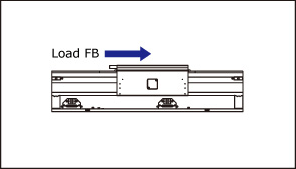
| Payload | ||
|---|---|---|
| 5kg | 10kg | 15kg |
| 38 | ||
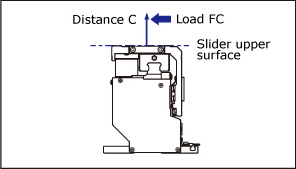
| C(mm) | Payload | ||
|---|---|---|---|
| 5kg | 10kg | 15kg | |
| 0 | 1190 | 850 | 780 |
| 10 | 970 | 710 | 650 |
| 20 | 760 | 610 | 560 |
| 30 | 630 | 530 | 490 |
| 40 | 540 | 480 | 430 |
| 50 | 470 | 430 | 390 |
| 60 | 410 | 390 | 360 |
- Note.
- The loads shown above are tolerable loads at a position "C" mm away from the slider upper surface.
Various data
Linear Conveyor Module LCM100
Related contents

Robotics Business Unit
Sales & Marketing Section
FA Sales & Marketing Division
127 Toyooka, Chūō-ku, Hamamatsu, Shizuoka 433-8103, Japan
Telephone +81-53-525-8350 /
Facsimile +81-53-525-8378

